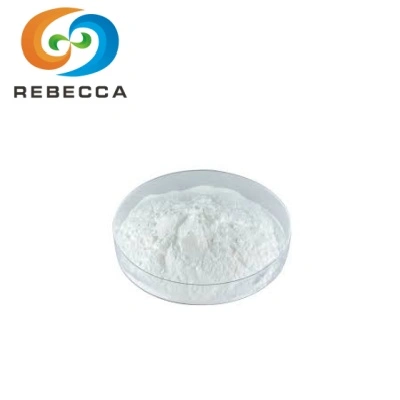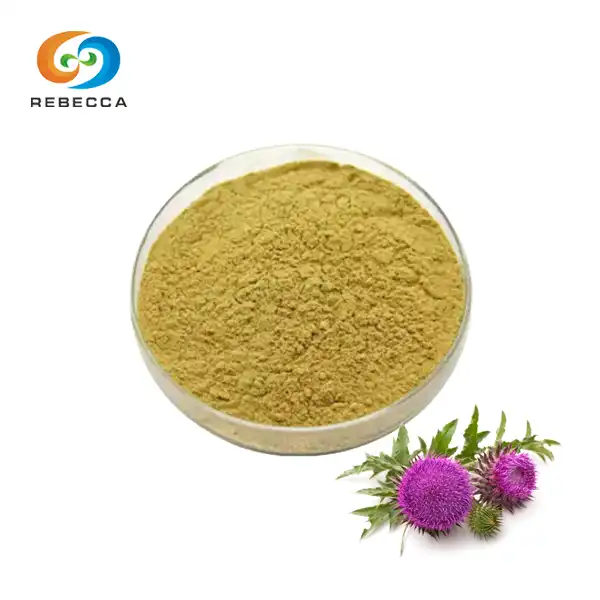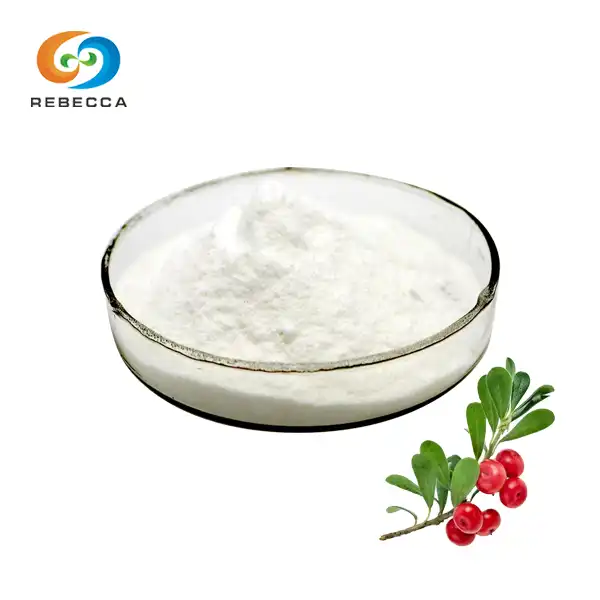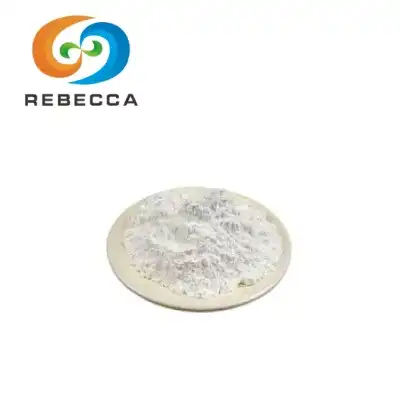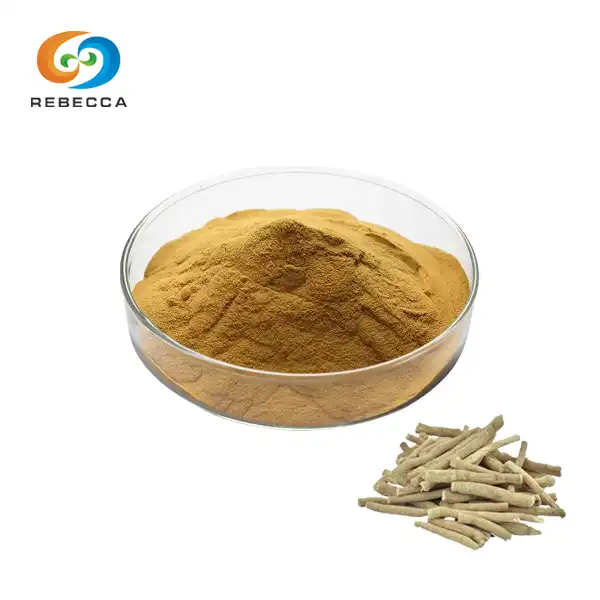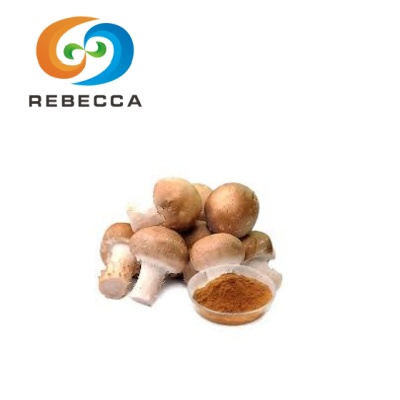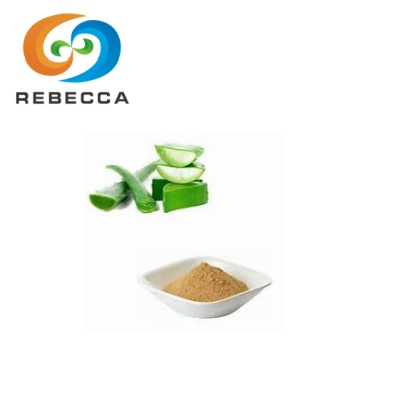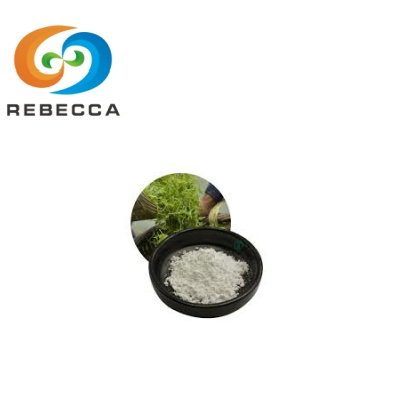Hyperforin VS Hypericin
St. John's Wort (Hypericum perforatum) has been used in traditional medicine for centuries, gaining significant attention in recent decades for its potential therapeutic applications. Two primary bioactive components found in this medicinal plant stand out for their remarkable properties: hyperforin and hypericin. While often mentioned together, these compounds differ substantially in their chemical structure, pharmacological actions, and therapeutic applications. Understanding the distinctions between hyperforin and hypericin is crucial for researchers, healthcare professionals, and consumers interested in the medicinal applications of St. John's Wort extracts.
This comprehensive analysis explores the critical differences between these compounds, focusing particularly on hyperforin extract, which has emerged as a compound of significant scientific interest. By examining their chemical characteristics, mechanisms of action, and safety profiles, we can better understand their respective roles in the therapeutic effects attributed to St. John's Wort.
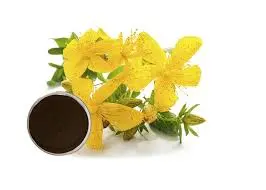
Chemical Structure And Source
Hyperforin and hypericin represent two distinctly different chemical classes with unique structural properties that directly influence their biological activities and stability characteristics. These structural differences explain why standardized extracts often specify content levels for each compound separately.
Hyperforin: As the principal active constituent in St. John's Wort, hyperforin belongs to the prenylated phloroglucinol class of compounds. Its complex chemical structure features a bicyclic core with multiple lipophilic isoprene chains attached. This molecular arrangement gives hyperforin extract its characteristic lipophilic properties, making it highly fat-soluble but relatively unstable when exposed to light, oxygen, and heat. The molecular formula for hyperforin is C35H52O4, representing its complex prenylated architecture.
Hyperforin primarily accumulates in the flowering tops and leaves of Hypericum perforatum, specifically within specialized translucent glands. High-quality hyperforin extract typically contains standardized levels ranging from 3-5% of this compound, though specialized extractions can yield higher concentrations. The extraction process for hyperforin requires careful handling to preserve its integrity, typically utilizing low-temperature methods and protection from light exposure.
Hypericin: Contrasting sharply with hyperforin, hypericin belongs to the naphthodianthrone class of compounds. Its structure features a planar, polycyclic quinone system that gives it distinctive red pigmentation and photosensitizing properties. Hypericin has the molecular formula C30H16O8 and exhibits greater stability than hyperforin under standard conditions.
Hypericin concentrates primarily in the dark glands visible as tiny dots on St. John's Wort leaves and petals. Traditionally, hypericin content has been used as the standardization marker for St. John's Wort preparations, with typical concentrations ranging from 0.1-0.3%. The compound's distinctive red color and fluorescent properties make it easier to track during extraction processes compared to the colorless hyperforin.
The extraction methodologies for these compounds differ significantly due to their structural characteristics. Hyperforin extract production typically employs specialized techniques including supercritical CO2 extraction or carefully controlled ethanol extraction under nitrogen atmosphere to prevent degradation. The resulting hyperforin extract requires stabilization techniques such as encapsulation or addition of antioxidants to maintain potency.
Recent advancements in extraction technology have enabled the development of stabilized hyperforin extract with enhanced shelf-life and bioavailability. These innovations have increased research interest in hyperforin's therapeutic potential beyond its traditional applications.
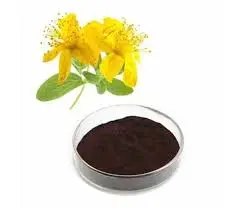
Pharmacological Action
The pharmacological profiles of hyperforin and hypericin exhibit remarkable differences, explaining why hyperforin extract has increasingly become the focus of scientific investigation for specific therapeutic applications.
Hyperforin Mechanisms: The pharmacological activity of hyperforin extract extends across multiple neurochemical systems. Unlike conventional antidepressants that target single neurotransmitter pathways, hyperforin functions as a broad-spectrum neurotransmitter reuptake inhibitor. Research demonstrates that hyperforin modulates the synaptic concentrations of serotonin, norepinephrine, dopamine, GABA, and glutamate by inhibiting their reuptake through a unique mechanism involving the activation of nonselective cation channels and sodium channels.
Specifically, hyperforin interacts with the TRPC6 (Transient Receptor Potential Channel 6) ion channel, elevating intracellular sodium levels which subsequently disrupts the sodium gradient required for neurotransmitter transport. This mechanism fundamentally differs from conventional selective serotonin reuptake inhibitors (SSRIs) or other targeted antidepressants, potentially explaining the broader activity profile of hyperforin.
Beyond neurotransmitter modulation, hyperforin demonstrates significant anti-inflammatory properties through inhibition of cyclooxygenase-1 and 5-lipoxygenase enzymes. Studies have also identified potent antibacterial activity against gram-positive bacteria, including multidrug-resistant strains of Staphylococcus aureus. Recent research indicates that hyperforin extract exhibits anti-angiogenic and antitumor properties in experimental models, opening potential applications in cancer research.
Hypericin Actions: In contrast, hypericin's primary mechanism involves photodynamic properties that generate reactive oxygen species when activated by light. This photosensitizing effect forms the basis for hypericin's potential application in photodynamic therapy for certain cancers and dermatological conditions. Unlike hyperforin, hypericin shows only modest effects on neurotransmitter systems.
Hypericin demonstrates activity as a non-competitive inhibitor of dopamine β-hydroxylase and inhibits protein kinase C. It also exhibits antiviral properties against enveloped viruses like herpes simplex and HIV by interfering with viral assembly and budding processes. However, these effects typically require light activation and occur at relatively high concentrations compared to therapeutic dosages.
Clinical applications of these pharmacological differences have led to a shift in focus toward hyperforin extract in modern St. John's Wort formulations. While traditional preparations were standardized for hypericin content, contemporary research indicates that the therapeutic effects for mood disorders correlate more strongly with hyperforin levels. Clinical trials using hyperforin-rich extracts (typically containing 3-5% hyperforin) have demonstrated superior efficacy compared to low-hyperforin preparations.
The broad neurochemical activity of hyperforin aligns with the multifactorial nature of depression and mood disorders, potentially offering advantages over single-mechanism pharmaceutical agents. Furthermore, hyperforin's anti-inflammatory properties may contribute to its effectiveness in conditions with inflammatory components, including certain types of depression.
Research into hyperforin's interaction with the endocannabinoid system represents an emerging area of investigation, with preliminary studies suggesting that hyperforin extract may modulate cannabinoid receptors and influence endocannabinoid levels. This previously unexplored mechanism could explain additional effects observed with St. John's Wort that weren't fully accounted for by neurotransmitter modulation alone.
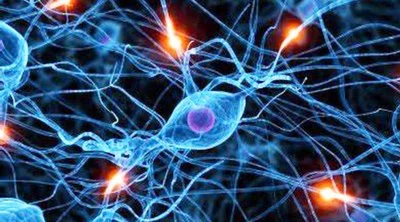
Safety and Interactions
Understanding the safety profiles and potential interactions of hyperforin and hypericin is essential for their appropriate clinical application. While both compounds contribute to the overall effect of St. John's Wort, they present distinct safety considerations that influence product formulation and usage guidelines.
Hyperforin Safety Profile: Hyperforin extract demonstrates a generally favorable safety profile when used appropriately. Clinical studies using standardized extracts containing 3-5% hyperforin have reported mild adverse effects comparable to placebo in most cases. The most commonly reported side effects include gastrointestinal discomfort, dizziness, dry mouth, and mild allergic reactions in susceptible individuals.
However, hyperforin's most significant safety concern relates to drug interactions rather than direct toxicity. As a potent inducer of cytochrome P450 enzymes (particularly CYP3A4) and P-glycoprotein, hyperforin extract can accelerate the metabolism of numerous medications, potentially reducing their effectiveness. This interaction mechanism explains documented cases where St. John's Wort preparations have reduced the efficacy of oral contraceptives, anticoagulants, immunosuppressants, antiretrovirals, and certain anticancer drugs.
The enzyme induction effect appears dose-dependent and directly correlates with hyperforin content rather than hypericin levels. Research indicates that low-hyperforin extracts (<1%) demonstrate significantly reduced interaction potential while retaining some therapeutic benefits. This has led to the development of specialized low-hyperforin formulations for patients requiring concomitant medications.
Additionally, hyperforin extract shows some theoretical potential for serotonergic interactions when combined with pharmaceutical antidepressants, particularly SSRIs or MAOIs. Clinical reports of serotonin syndrome remain rare but underscore the importance of professional guidance when transitioning between antidepressant medications and hyperforin-containing preparations.
Hypericin Safety Considerations: Hypericin presents a distinctly different safety profile centered primarily around its photosensitizing properties. When present in sufficient quantities, hypericin can cause phototoxic reactions characterized by increased sensitivity to sunlight, resulting in skin redness, burning, and dermatitis following sun exposure. This effect is more pronounced in fair-skinned individuals and at higher dosages.
Unlike hyperforin, hypericin demonstrates minimal interaction with drug-metabolizing enzymes. However, it may interact with certain photosensitizing medications, potentially amplifying skin sensitivity reactions. Hypericin also has some inhibitory effects on MAO enzymes, though this occurs at concentrations that are unlikely to be achieved through standard supplementation.
Rebecca: Hyperforin Extract Manufacturer
At Rebecca Bio-Tech, we specialize in producing premium quality hyperforin extract with precise standardization and exceptional purity. Our advanced extraction technology ensures maximum stability and potency of this delicate compound.
Whether you're a pharmaceutical researcher, supplement manufacturer, or healthcare formulator, our hyperforin meets the highest standards for research and product development. Our rigorous quality control processes ensure consistent potency batch after batch.
For more information about our hyperforin capabilities or to request product specifications, please get in touch with our technical team today.
information@sxrebecca.comReferences
- Zanoli P. Role of hyperforin in the pharmacological activities of St. John's Wort. CNS Drug Rev. 2004;10(3):203-218.
- Linde K, et al. St John's wort for major depression. Cochrane Database Syst Rev. 2008;(4):CD000448.
- Chatterjee SS, et al. Hyperforin as a possible antidepressant component of hypericum extracts. Life Sci. 1998;63(6):499-510.
- Schempp CM, et al. Topical application of St John's wort (Hypericum perforatum L.) and of its metabolite hyperforin inhibits the allostimulatory capacity of epidermal cells. Br J Dermatol. 2000;142(5):979-984.
- Brenner R, et al. Comparison of an extract of hypericum (LI 160) and sertraline in the treatment of depression: a double-blind, randomized pilot study. Clin Ther. 2000;22(4):411-419.
